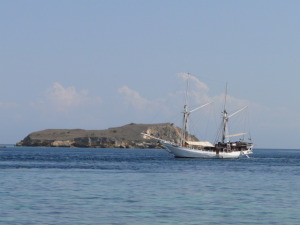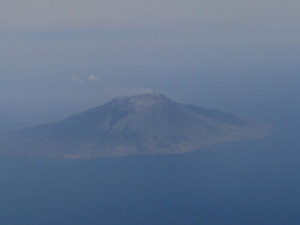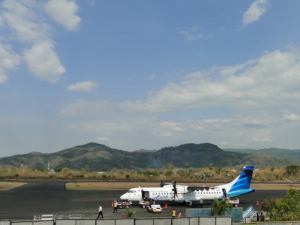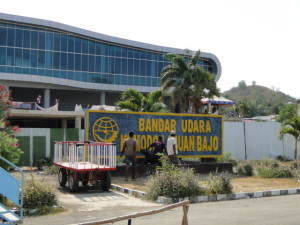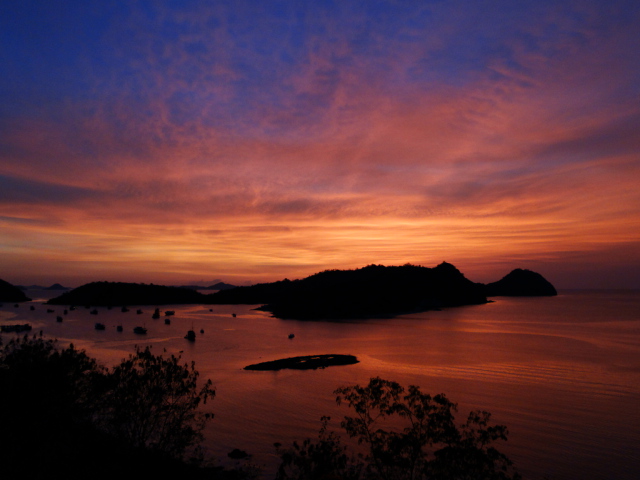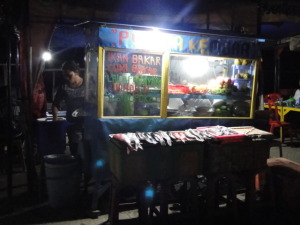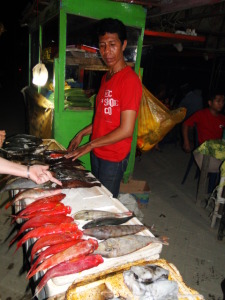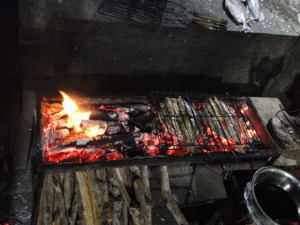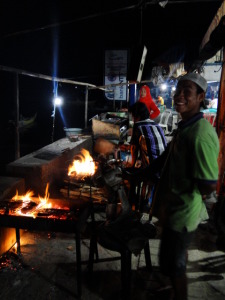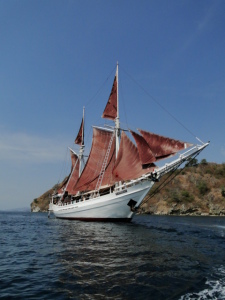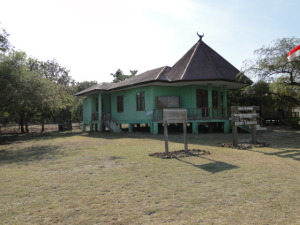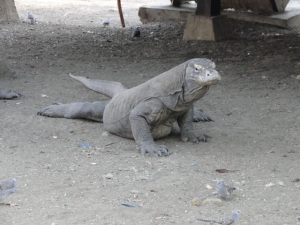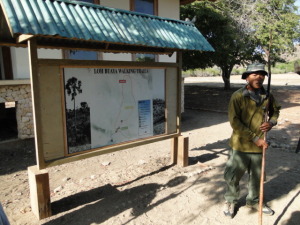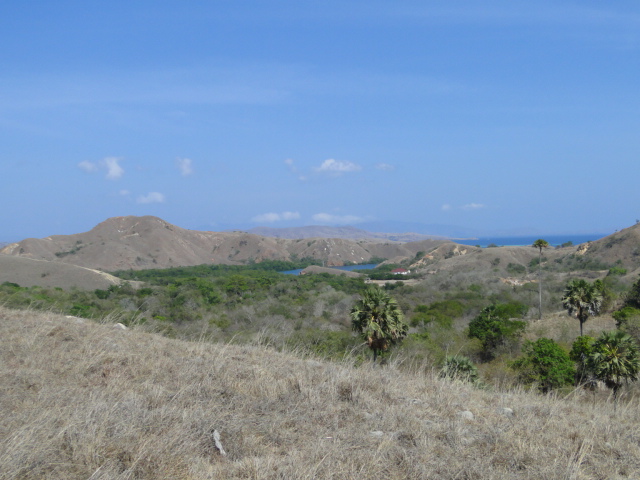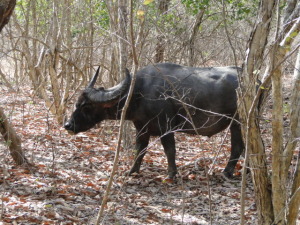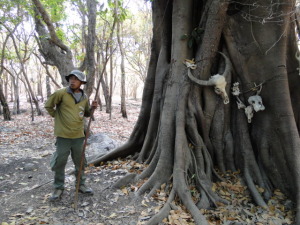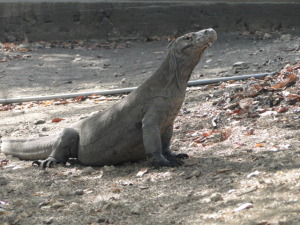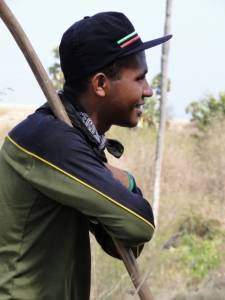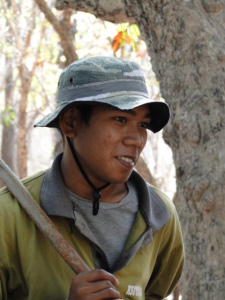The Bugis (or Buginese) are one of the great seafaring peoples of the Indian Ocean. Like those other great mariners, the Greeks, they are also great story-tellers: their epic, Sureq Galigo or La Galigo, is longer than the Mahabharata. The Buginese were converted to Islam in the 17th century and except for a few sub-groups of Christians and Hindus they are predominantly Muslim today. One interesting aspect of Bugis culture is that it recognizes five gender categories including a ‘meta-gender’.
Bugis seafarers have long been associated with a distinctive kind of sailing vessel: a fore-and-aft rigged craft known as a Phinisi or Pinisi schooner (the words are said to be derived from the Dutch ‘pinas’ or pinnace). These vessels are still constructed by traditional methods in Sulawesi.
Phinisi schooners are an old interest of mine (a Bugis vessel makes a brief appearance in River of Smoke); I have also long wanted to visit the Komodo Islands. The Komodo dragon (Varanus komodoensis), is surely one of the most fascinating creatures in existence – the planet’s largest living species of lizard, it was not ‘discovered’ till the 1910s. So when an opportunity arose to sail around Indonesia’s Komodo National Park in a Phinisi schooner I could hardly believe my luck: needless to say, I jumped at the chance.
The journey began with a flight to the port of Labuan Bajo, at the western end of Flores, one of the Lesser Sunda Islands, in Indonesia’s Nusa Tenggara region.
On the way there we sighted smouldering volcanoes, rising out of the sea.
Labuan Bajo’s airport is picturesque
and of impressive size,
for a quiet little town.
It’s harbour is spectacular,
especially at sunset.
After nightfall little warungs
appear along the waterfront,
offering a colourful assortment of fish,
which go straight to the grill,
brushed with a little oil and a few spices.
They are ready for the table
in a few minutes.
Our vessel, the Katharina,
was at anchor in the harbour: a sleek 40 metre Phinisi,
she is operated by a company called Sea Trek Sailing Adventures, which also owns another, slightly larger, Phinisi, the Ombak Putih.
From Labuan Bajo we sailed to an island called Rinca, one of the largest of the 29 islands of Komodo National Park.
Surrounded by mangroves and coral reefs, Rinca has some 1,300 Komodo dragons.
An elaborate gateway
leads to the ranger station of Loh Buaya.
There are a half-dozen or more dragons around the rangers’ quarters;
they are apparently drawn there by the smell of cooking
(the guards never feed them and visitors are forbidden to do so,
although this does not, unfortunately, always stop them from trying).
We were led into the island by a group of rangers –
they all carried forked sticks, like this one, to fend off the dragons.
With the dry season drawing to a close the landscape was reduced to its stark essentials.
Only a few of the rangers are of Bugis heritage but many are good story-tellers: it is easy to imagine that story-telling helps while away many a long hour, when the visitors are gone and there is not much to do.
They explain that the dragons eat nothing but (dead) meat: mainly buffalo and deer.
Apart from hooves and horns,
they will consume
every bit of their prey
 – with the exception of the innards, which are usually filled with vegetable matter.
– with the exception of the innards, which are usually filled with vegetable matter.
A Komodo dragon’s bite is lethal:
it was previously thought that their saliva contained a toxic community of bacteria but it has now been confirmed that the animals possess venom glands.
Once bitten, a deer or buffalo will die a slow, lingering death, sometimes over a period of weeks. Komodo dragons do not hesitate to attack spitting cobras, which are abundant on these islands (as in this video).
Attacks on human beings are rare but not unknown.
A ranger tells a rather gruesome tale of a tourist who strayed from his group and was never seen again
– all that was found of him was some undigested clothing and hair.
Komodo dragons are not good parents, says another ranger, with a laugh.
They are cannibalistic and love to feed on their children. The females have an advantage in this regard since they know exactly where their eggs are hidden.
In an interesting twist to the phrase ‘expectant mother’, this young female is keeping vigil beside her nest so she can make a meal of her hatchlings when they emerge .
Fortunately for the species, some of the young usually manage to make a getaway. The lucky few must spend the first three years of their lives on trees, where they subsist on lizards, birds’ eggs, insects – and of course other juveniles.
 Life isn’t easy for baby dragons.
Life isn’t easy for baby dragons.
Our rangers were a cheerful lot
but their stories gave rise to a disturbing question: in years to come, when climate change and sea-level rise have forced a generation of human beings to retreat to higher ground, will they come to think of their forebears as dragons whose unbounded appetites resulted in the devouring of their young?

